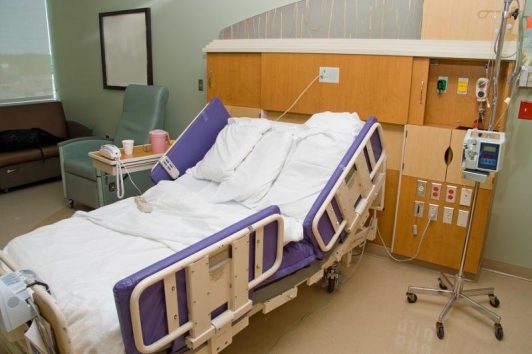SHHH.....There is Healing Going on in Here.
Written By: Amy DuFrane
A crucial component of the healing process is proper sleep. The body needs adequate rest to recover quickly and completely from an illness or surgery. One of the most frequent complaints from patients after a hospital stay is the noise prevented them from getting the sleep that they needed.
Acoustical engineers from John Hopkins University have found that hospital noise levels have increased steadily over the last 50 years with the worst offenders being medical and communication technologies such as:
- Electronic Equipment
- Alarms
- Paging Systems
Although these sounds are a necessary part of the hospital environment, what needs consideration is how to lessen the adverse effect of these noises on the patient.

Against what one may believe, a quiet hospital room isn’t a comfortable hospital room conducive to effective healing. With the lack of ambient background sound, a hospital room is too quiet where every sound can be heard and is disruptive. Studies have shown that sudden noises in a hospital room can be detrimental to a patient’s health. Researchers have found that sudden spikes in noise levels can create a startle reflex resulting in stress, an increased heart rate and increased blood pressure. These adverse reactions to noise can also negatively influence a patient’s recovery time.
WHAT CAN BE DONE?
One method of controlling noise and adding acoustical comfort to a hospital room is adding background sound. Through the use of sound masking, the ambient background sound of the room is raised just enough to cover or reduce the impact of the noises around the patient. When properly tuned, sound masking creates a gentle, comfortable sound that is engineered to match speech frequencies creating a much more pleasant environment. By slightly raising the ambient background sound, sound masking also reduces the dynamic range of the sounds inside the room. The dynamic range is the difference between the ambient background sound of the room and the highest level of sounds in the same environment. By reducing the dynamic range, the noise spikes are lessened creating a much more acoustically comfortable environment. It has been proven that by adding sound masking to a hospital room/ICU, patients' sleep improves significantly. In a clinical trial at the University of Texas, Austin it was found that when sound masking was added to the ICU, patients' sleep improved by 22.9%. It has also been discovered that of all the different noise reduction treatments that were tested, sound masking was the most effective.
IMPROVED BOTTOM LINE
Sound masking is a viable solution that provides both increased patient comfort and improved patient satisfaction. This is good news for hospitals that are not only concerned for their patients' well-being but are also concerned with their HCAHPS scores. One of the questions asked in rating a patient's satisfaction with a hospital stay is "how often the area around the patient's room was quiet at night?". Often this is a very low rated area of a hospital stay. However, through the use of sound masking, not only will the patient's get the adequate rest that they need, but the overall satisfaction in this area will also go up. Improved HCAHPS scores are imperative for increased Medicare and Medicaid reimbursement. By adding sound masking, hospitals can improve patient comfort and their overall satisfaction rating. As part of proper acoustical planning, sound masking can help hospitals achieve their primary objective of creating a comfortable environment where patients can heal.
